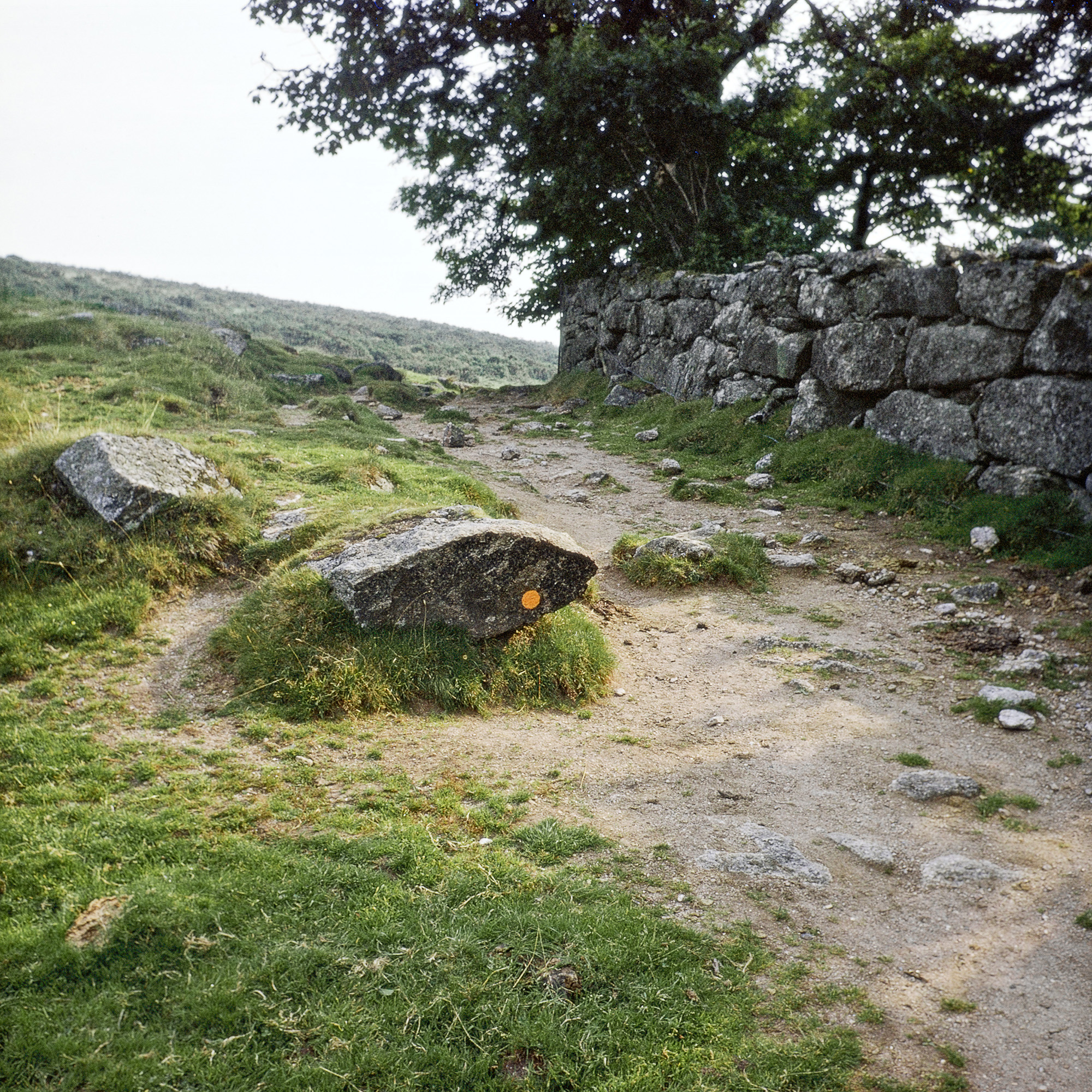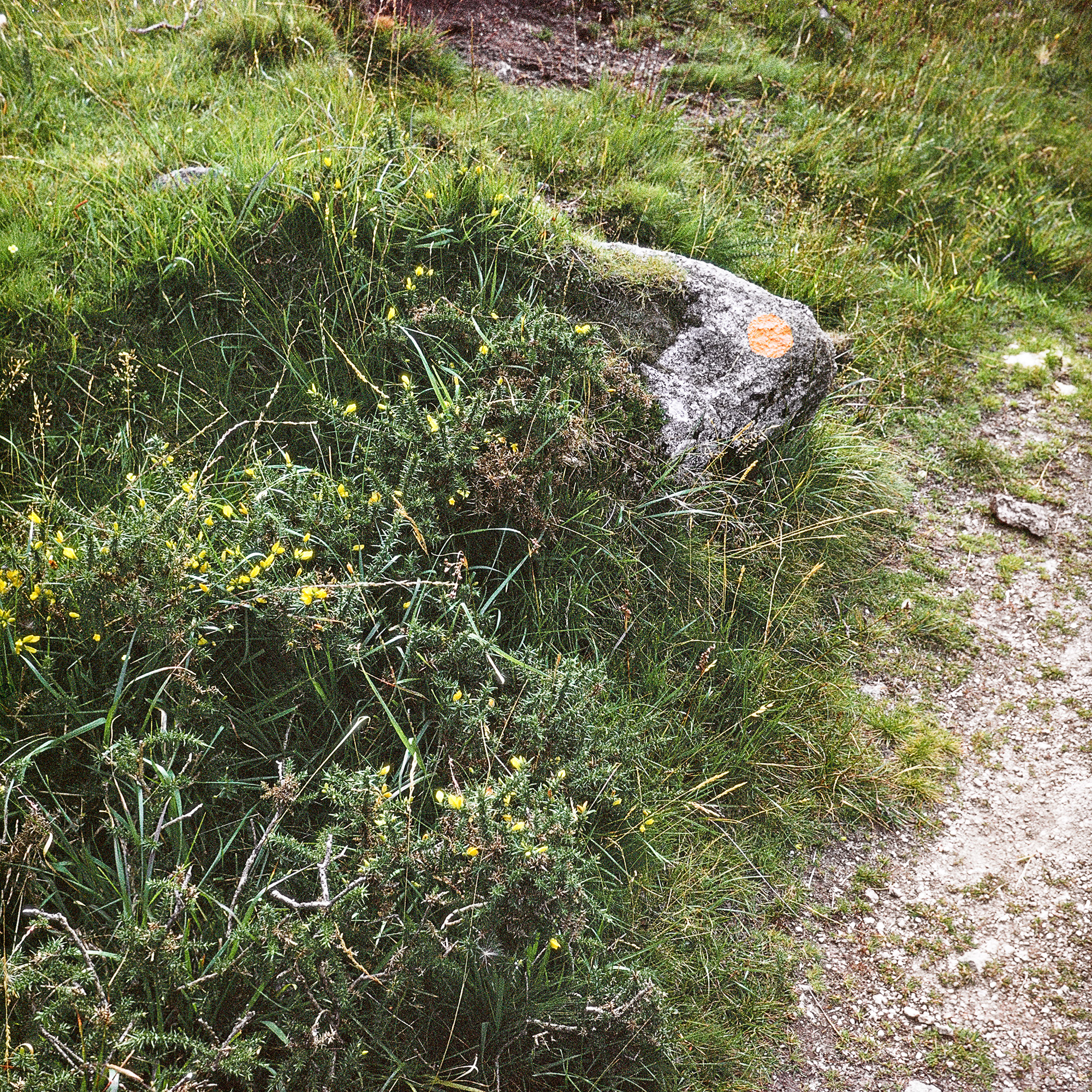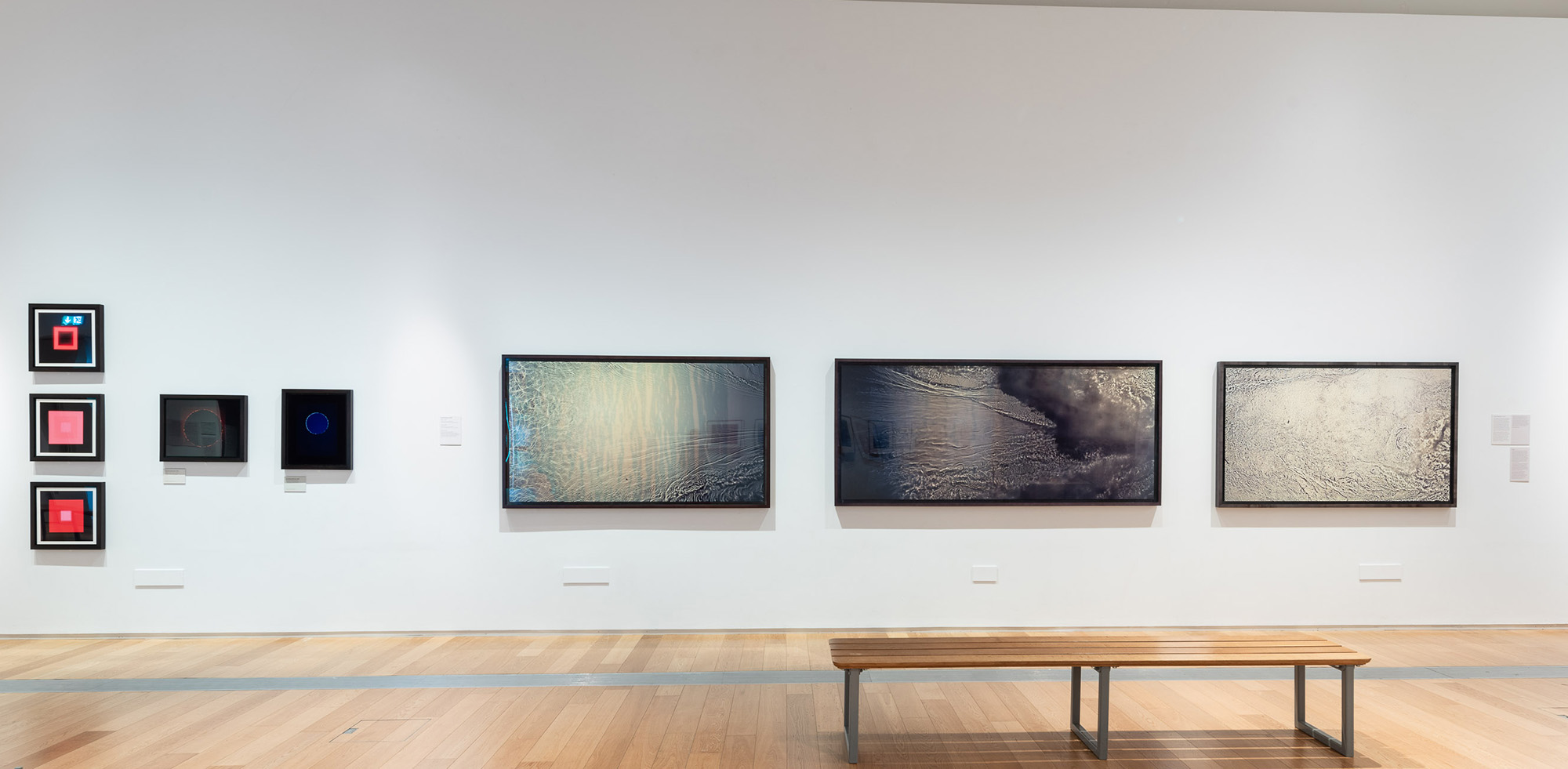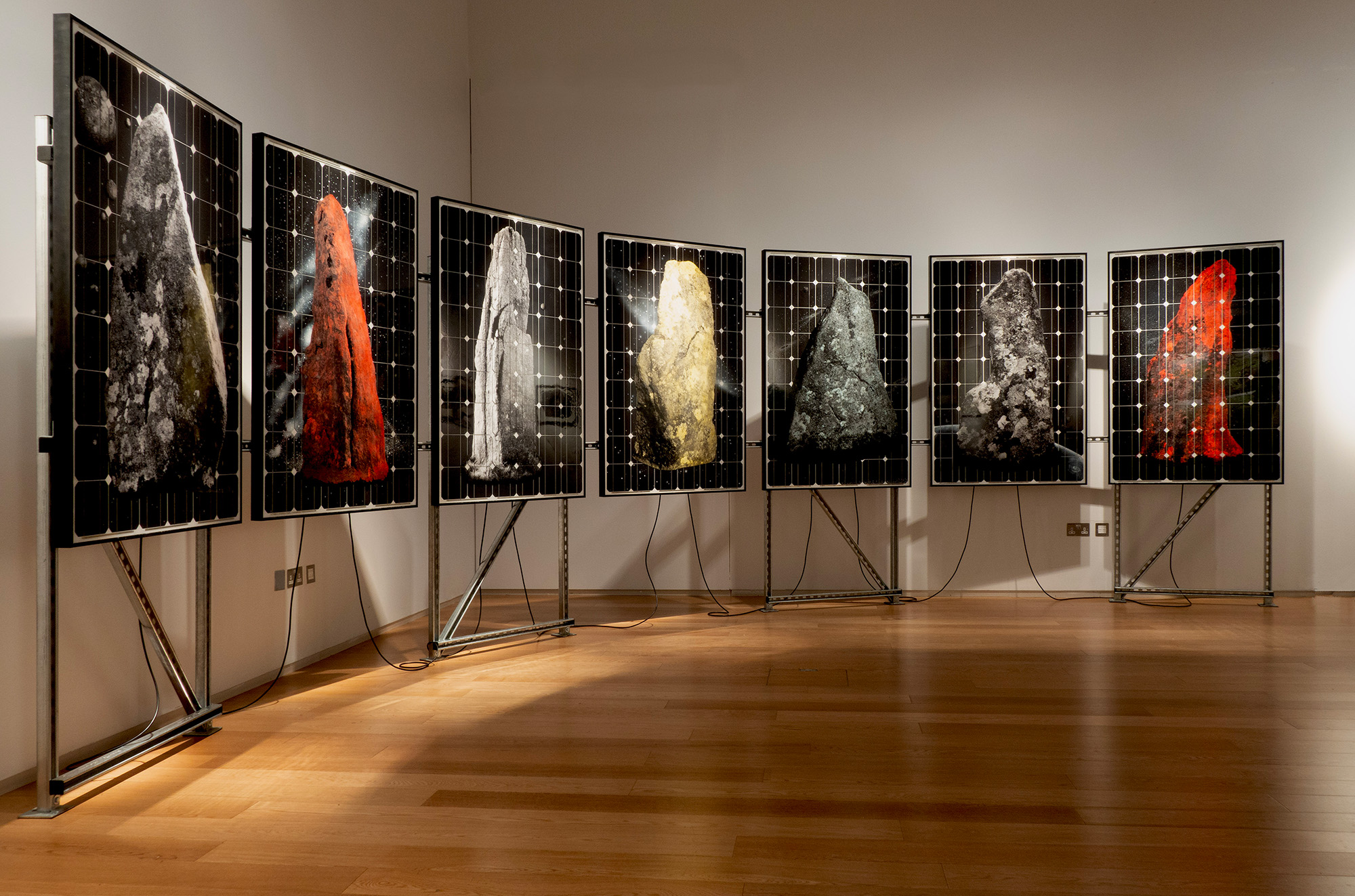Creatively
collaborating with place: an artistic exploration of Dartmoor’s radical landscapes
The landscape of Dartmoor is one of beauty, but also of politics, history, climate concerns, habitation & much more. An exhibition at the Royal Albert Memorial Museum in Exeter looks at the national park through an artistic lens with a group exhibition of eighteen artists who have considered the place & its meaning. Nyima Murry went along for recessed.space.
A major new exhibition at the Royal Albert Memorial Museum
[RAMM] in Exeter traces artist connections to the landscape of Dartmoor from
the late 1960s to the present day, bringing together previously unseen work in
a bold curatorial consideration.
Spanning film, photography, text and sculpture, Dartmoor: A Radical Landscape brings together a significant collection of work from eighteen contributing artists. From the idyllic picturesque view of Dartmoor that has captured artists for decades, to the exploration of wider urgent issues around land rights and the ecological crisis, the ambitious show paints a rich tapestry of this unique moorland.
![]()
![]()
Opening the show with Artists working in new ways, the work of influential British artist Richard Long, American artist Nancy Holt, and experimental feminist artist Marie Yates introduces Dartmoor’s place within the history of Land Art – a radical form of art that emerged during the 1960s as artists engaged with landscape directly as subject and studio. Documenting their journeys primarily as photographs and drawings, the work foregrounds the temporal experience of exploring Dartmoor in staggeringly beautiful ways.
For example, Nancy Holt’s Trail Marker’s (1969) presents a rich wall of images that document a short walk between Two Bridges and Wistman’s Wood, following the painted orange dots that mark the rocks and gateposts that guide visitors through the publicly accessible footpath.
![]()
![]()
![]()
![]()
![]()
Walking through the landscape as a methodology is a feature of much of the work on display. Richard Long’s notable works feature heavily, with eleven pieces showcased including the mixed media work Two Walks (1972), which layers an OS Map with text, a photograph, and text on paper to trace the convergence of two intersecting lines made by Long’s solitary walk through the landscape.
Celebrating the collective experience of walking, the ethereal, almost haunting images of contemporary Devon-based photographer Robert Darch, documents the Ten Tors expeditions undertaken by local teenagers. Navigating this wild expanse of moorland, the images speak of the hardship and freedom that follows this annual rite of passage by students from Devon and the surrounding area.
![]()
![]()
![]()
Walking in this landscape is also dealt with in the exhibition as more than an academic concept, but a fundamental access right that relates to the urgent ecological crisis. Working closely with the Dartmoor Preservation Association as the lead partner of the exhibition, the political status of Dartmoor both ecologically and socially underpins the show.
“Dartmoor has been, and continues to be, a site and space of inspiration for creativity. It is also a place that is a microcosm of urgent issues being faced in the UK today such as climate break down, and the right to wild camp, ” Lara Goodband, Contemporary Art Curator and Programmer at RAMM, told Recessed Space.
“In the year that’s experienced the world’s highest temperatures with scientists identifying Britain and, in particular, Dartmoor as having the least biodiverse land with catastrophic losses of wildlife since 1970, as well as the latest battle by a land owner in the courts to prevent access of any sort to his land, this seemed exactly the right time to bring a group of different artists together who are exploring a range of issues.”
![]()
![]()
Whilst the majority of the show is made up of photographs, the medium is explored with the inclusion of a range of camera-less photographs showcased. A highlight is the work of Susan Derges, whose three large-scale Eden photograms are displayed together here for the first time thanks to major loans from the Victoria and Albert Museum, London. Made by submerging photographic paper in the River Taw at night and exposing it to flashlight during the night’s darkness, the images are a mesmerising portrait of the river that captures a landscape in process through the construction technique.
![]()
fig.xiii
Dartmoor’s rivers also feature in the two-screen film installation Can you tell the time of a running river by artist Ashish Ghadiali, which was commissioned specifically for the show. Responding to RAMM’s collection of Dartmoor materials, Ghadiali’s moving image responds to a series of lantern slides that depict the stone rows, circles, and standing stones on Dartmoor – the installation projecting a contemporary performance of Ghadiali taking a wild swim juxtaposed with these historic images on a perpendicular wall whilst the artist's voice weaves between soundscape and song.
The power of Dartmoor’s stone monoliths also preoccupies the work of the show’s second commissioned artist, Alex Hartley, whose large-scale installation sculpture attempts to capture the energy of the standing stones. Awarded the commission following an open call to local Devon artists inspired by Dartmoor, the work is an “ambitious sculpture of scale”, and notably the sole sculptural contribution in the show.
![]()
![]()
“All the work we do
with artists engages directly with the RAMM’s rich and diverse collections and
gives opportunities for artists to be inspired by the collections in the
stores, work with collection curators and create new work,” Goodband explained.
“Alex’s photographs of standing stones he feels have a special magic or energy, are juxtaposed alongside granite rocks from Dartmoor that use glass tubes from heating systems,” she continued, adding that “it’s all wonderfully Trekkie [as in Star Trek] and has a powerful visual and physical presence that appeals to young children as well as teenagers and the arty crowd.”
“Ashish Ghadiali was invited by RAMM based on his research into Gaia theory and his work on decolonisation. His research into the RAMM’s magic lantern slide collections have an added dimension this many layered moving image & sound piece.”
![]()
![]()
Alex and Ashish reflect on their commissions in the short documentary film that accompanies the show, screened within the resource and library nook at the heart of the exhibition. Discussing the work alongside other contributing artists, the film foregrounds the personal relationships the artists have with Dartmoor – many of whom are longstanding residents of the area.
The power in this show lies in these relations – from the dream-like portraits of Sian Davey to the documenting of Right to Wild camp protests from Fern Leigh Albert, the show holds space for the connections between Dartmoor, ecology, and cultural value. The works on show feel both timely and pertinent given the recent access campaigns around Dartmoor, as well as long overdue – Dartmoor could arguably be given co-authorship in many of the projects.
![]()
![]()
![]()
Spanning film, photography, text and sculpture, Dartmoor: A Radical Landscape brings together a significant collection of work from eighteen contributing artists. From the idyllic picturesque view of Dartmoor that has captured artists for decades, to the exploration of wider urgent issues around land rights and the ecological crisis, the ambitious show paints a rich tapestry of this unique moorland.


figs.i,ii
Opening the show with Artists working in new ways, the work of influential British artist Richard Long, American artist Nancy Holt, and experimental feminist artist Marie Yates introduces Dartmoor’s place within the history of Land Art – a radical form of art that emerged during the 1960s as artists engaged with landscape directly as subject and studio. Documenting their journeys primarily as photographs and drawings, the work foregrounds the temporal experience of exploring Dartmoor in staggeringly beautiful ways.
For example, Nancy Holt’s Trail Marker’s (1969) presents a rich wall of images that document a short walk between Two Bridges and Wistman’s Wood, following the painted orange dots that mark the rocks and gateposts that guide visitors through the publicly accessible footpath.





figs.iii-vii
Walking through the landscape as a methodology is a feature of much of the work on display. Richard Long’s notable works feature heavily, with eleven pieces showcased including the mixed media work Two Walks (1972), which layers an OS Map with text, a photograph, and text on paper to trace the convergence of two intersecting lines made by Long’s solitary walk through the landscape.
Celebrating the collective experience of walking, the ethereal, almost haunting images of contemporary Devon-based photographer Robert Darch, documents the Ten Tors expeditions undertaken by local teenagers. Navigating this wild expanse of moorland, the images speak of the hardship and freedom that follows this annual rite of passage by students from Devon and the surrounding area.



figs.viii-x
Walking in this landscape is also dealt with in the exhibition as more than an academic concept, but a fundamental access right that relates to the urgent ecological crisis. Working closely with the Dartmoor Preservation Association as the lead partner of the exhibition, the political status of Dartmoor both ecologically and socially underpins the show.
“Dartmoor has been, and continues to be, a site and space of inspiration for creativity. It is also a place that is a microcosm of urgent issues being faced in the UK today such as climate break down, and the right to wild camp, ” Lara Goodband, Contemporary Art Curator and Programmer at RAMM, told Recessed Space.
“In the year that’s experienced the world’s highest temperatures with scientists identifying Britain and, in particular, Dartmoor as having the least biodiverse land with catastrophic losses of wildlife since 1970, as well as the latest battle by a land owner in the courts to prevent access of any sort to his land, this seemed exactly the right time to bring a group of different artists together who are exploring a range of issues.”


figs.xi,xii
Whilst the majority of the show is made up of photographs, the medium is explored with the inclusion of a range of camera-less photographs showcased. A highlight is the work of Susan Derges, whose three large-scale Eden photograms are displayed together here for the first time thanks to major loans from the Victoria and Albert Museum, London. Made by submerging photographic paper in the River Taw at night and exposing it to flashlight during the night’s darkness, the images are a mesmerising portrait of the river that captures a landscape in process through the construction technique.

fig.xiii
Dartmoor’s rivers also feature in the two-screen film installation Can you tell the time of a running river by artist Ashish Ghadiali, which was commissioned specifically for the show. Responding to RAMM’s collection of Dartmoor materials, Ghadiali’s moving image responds to a series of lantern slides that depict the stone rows, circles, and standing stones on Dartmoor – the installation projecting a contemporary performance of Ghadiali taking a wild swim juxtaposed with these historic images on a perpendicular wall whilst the artist's voice weaves between soundscape and song.
The power of Dartmoor’s stone monoliths also preoccupies the work of the show’s second commissioned artist, Alex Hartley, whose large-scale installation sculpture attempts to capture the energy of the standing stones. Awarded the commission following an open call to local Devon artists inspired by Dartmoor, the work is an “ambitious sculpture of scale”, and notably the sole sculptural contribution in the show.


figs.xiv,xv
“Alex’s photographs of standing stones he feels have a special magic or energy, are juxtaposed alongside granite rocks from Dartmoor that use glass tubes from heating systems,” she continued, adding that “it’s all wonderfully Trekkie [as in Star Trek] and has a powerful visual and physical presence that appeals to young children as well as teenagers and the arty crowd.”
“Ashish Ghadiali was invited by RAMM based on his research into Gaia theory and his work on decolonisation. His research into the RAMM’s magic lantern slide collections have an added dimension this many layered moving image & sound piece.”


figs.xvi,xvii
Alex and Ashish reflect on their commissions in the short documentary film that accompanies the show, screened within the resource and library nook at the heart of the exhibition. Discussing the work alongside other contributing artists, the film foregrounds the personal relationships the artists have with Dartmoor – many of whom are longstanding residents of the area.
The power in this show lies in these relations – from the dream-like portraits of Sian Davey to the documenting of Right to Wild camp protests from Fern Leigh Albert, the show holds space for the connections between Dartmoor, ecology, and cultural value. The works on show feel both timely and pertinent given the recent access campaigns around Dartmoor, as well as long overdue – Dartmoor could arguably be given co-authorship in many of the projects.



figs.xviii-xx
RAMM is Exeter’s world-class museum, with stunning displays that reveal Devon & Exeter’s rich history & global connections. These displays of extraordinary objects inspire artists to create new work & provide a rich context for an engaging contemporary art programme that includes temporary collection interventions & exhibitions. Featuring new & commissioned work by internationally renowned artists including Joy Gregory, Bedwyr Williams, Michelle Williams Gamaker, Grace Ndiritu & Florence Peake, as well as existing works by artists such as Mikhail Karikis & Lucy Skaer in RAMM-curated shows, contemporary art at RAMM reflects the varied and fascinating subjects explored in the museum, with a particular focus on environmental issues & telling untold stories. RAMM also supports & shows artists living & working in Exeter & the wider region, most recently Ashanti Hare, Léonie Hampton & Lucy Stein. It was recently awarded Gold in the Ethical, Responsible & Sustainable Tourism category at the Visit Devon Tourism Awards.
RAMM has a track record of making its collections accessible to a wide audience. Recent projects such as Out and About: Queering the Museum & a collaboration with the Museum of Colour for its My Words gallery has seen RAMM working with poets & artists from diverse backgrounds to explore & reinterpret the museum collections from their own perspectives. In 2012 RAMM won the much coveted Art Fund Museum of the Year award in recognition of the innovative & thoughtful way the collection was redisplayed. When presenting the award Lord Chris Smith described the galleries as “some of the most intelligently considered displays on view in any museum in the UK” demonstrating RAMM’s extensive interpretative skill that engages audiences of about 250,000 each year. A flagship Exeter City Council service, RAMM attracts funding from other sources & is an Arts Council England National Portfolio Organisation.
www.rammuseum.org.uk
The Dartmoor Preservation Association was founded in 1883, as a response to the impact of industrial scale mining, military encroachment & diminishing historic rights to access the land.
Throughout their long history the DPA opposed disfigurement of the moor through commercial non-native afforestation, the building of infrastructure such as an airport at RAF Harrowbeer, roads & reservoirs & campaigned against china-clay pit expansion at Blackabrook Valley & beyond. They have long advocated for the end of military training on Dartmoor & play a part as a responsible landowner.
In the 21st century, threats to Dartmoor are perhaps more insidious than a huge telecoms mast; climate change, population pressures, chronic underfunding of national parks & a rapidly expanding conversation on 'what' national parks should be for. The DPA's relevance in this is greater than ever, after 140 years of campaigning & curating they are uniquely well-placed to advise & influence.
www.dartmoorpreservation.co.uk
Nyima Murry is a British-Tibetan curator, design writer and filmmaker. Trained as a Landscape Architect, her work often deals with the intersection of art, architecture and landscape, reflecting the space in which her practice occupies. Nyima is a founding member of PATCH Collective, a BIPOC design collective who organise public events that engage with the built environment from the perspective of being of diaspora.
www.nyimamurry.com
www.nyimamurry.com


